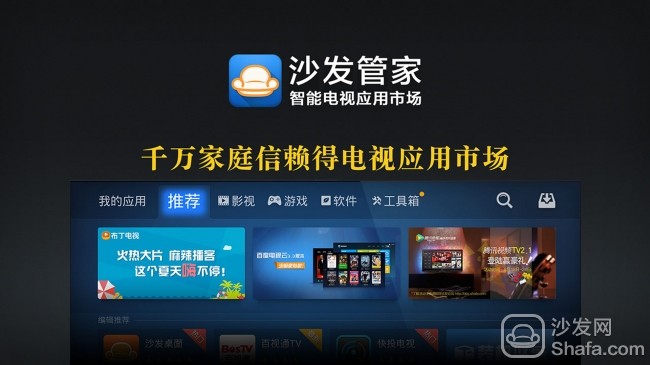
“The greatest value of the media in the future will be the contention between channels and content.†At BesTV, the investor’s exchange meeting with the Oriental Pearl, the words spoken by Li Wengang, the head of Shanghai Wenguang, are better viewed as statements than as statements. Behind this sentence, in fact, asking a vulgar and has already had an unquestionable answer to the question - channel value, or content value?
The more urgent issues in the television industry at this stage are no longer simply content issues.
In recent years, although TV industry has spared no effort in content investment and planning, even the vast majority of its energy and resources have gathered content, but after entering 2014, an increasingly clear market situation is that the television industry is more pressing. The problem is not simply a matter of content. The reason is that television has undergone two phases of development in the construction of content, and it has basically clarified what to do in the future.
The first phase mainly occurred in 2013. Due to the intensified competition within the industry and the emerging new media pressure, in order to expand revenues, Zhejiang and Hunan as the representative platforms have found content methodologies that fully exploit traditional advertising effectiveness. That is, content based on conventional viewing is fragmented.
Although this kind of revenue efficiency is based on the extensive mode of focusing on packaged sales, after social marketing and word-of-mouth communication, the attentional flow pool formed by individual content is very impressive, which has contributed to the explosive growth of the television industry.
This phenomenon is mainly reflected in the rapid growth of the first-line platform in 2013 and 2014. Even with the video joining the competition, it has gradually established a new content market centered on television. In the words of Li Wengang, who is at the helm of Shanghai Wenguang, high-quality content has begun to be shaped as a traffic portal.
The second phase occurred in 2014. Thanks to the successful effects of Hunan Satellite TV and Zhejiang Satellite TV, the methodology of traditional advertising effectiveness was promoted in the television industry. Brought two results:
1. The distance between the TV stations behind and the distance between them is getting more and more difficult
Like a war, in the case of similar strategies and tactics, to win a battle, it often becomes a competition between basic strength and basic strength, and the advantaged platform has an unrivalled first-mover advantage.
2. Based on this methodology, the value scale of traditional advertisements for high quality content is very clear
Since the high growth rate of this wave of TV is based on the old soil (traditional ratings), although high-quality large-scale movies have obtained considerable traffic, it is already clear where the efficiency ceiling is. Therefore, with the sophisticated use of the methodology in the entire television industry, coupled with intensive cultivation and full exploitation in 2014, the high growth potential of traditional advertising effectiveness has already bottomed out in 2014.
At the same time, the rise of independent content producers and the gradual formation of open content markets have also slowed down the advantages of content platforms in comparison to second-tier Taiwanese and commercial videos. As content production has begun to become market-oriented and mature, It is full of risk that TV stations will continue to regard it as the only core strength.
Under such circumstances, in order to maintain high growth and quickly escape the potential crisis brought about by the new media environment and new media, TV must give full play to its current advantages in terms of content and use this time difference to start building an extension chain of content value. It is the current hot IP industry that has become an industry consensus to establish sustainable first-mover advantage.
The television industry is involved in mobile games and e-commerce, creating hardware and making movies. Therefore, deep-growing the surrounding industries is an important way for content planning to continue.
Therefore, after going through these two stages of development, at least in the field of television, their future construction of content is not as confused as that of other media. Instead, it is very clear. Therefore, although the TV industry has spared no effort in content investment and strategic planning, and even most of the energy and resources have been gathered into the content, the more urgent issues in the television industry at this stage are no longer simply content issues.
Outside the content, the construction of the channel is a problem
If the current problems in the media industry are categorized as content and channel disputes (Li Ruigang), then for the television industry, beyond the content, it is really time to start planning channels.
The television industry has several stages of understanding channels:
In the first phase, four to five years ago, Dragon TV took shares in the network with a defensive mentality. In the words of Dragon TV, it was not particularly clear at the outset, but the loss of television advertisements to the Internet is a general trend. In order to retain the lost value, the behavior of holding a share of the Internet became popular. Strictly speaking, Dragon TV's move is a defensive tactic and has little to do with strategic planning.
√ In the second stage, the last two years, under the background of close cooperation between the TV industry and commercial video, Dragon TV has increased its holdings in popularity, even to the last full acquisition. The television industry has gradually realized the importance of channels in the transition of the television industry, especially how to cultivate its own network broadcasting channels. At this time, the television industry slowly showed some kind of initiative. Although it was still a very small number of television stations, it was at least a sign.
√ In the third phase, in 2014, during the integration of BesTV and Oriental Pearl, Li Ruigang proposed to focus on exploring the strategic direction of OTT and smartTV, including Hunan TV's strategically designed mango TV video platform.
However, Hunan Satellite TV believes that Mango TV will be the next channel of Hunan Satellite TV in the future, and Li Ruigang’s mouth will be equally important. Although there are still certain differences in the understanding of channels, at this stage, at least in the television industry, The first-line advantage platform basically clarified what role the network broadcasting channel should play in TV transition. This is fundamentally different from the previous content-only theory.
However, even so, the television industry's perception and understanding of channels, including how to plan and use the channels, has so far no consensus strategy for the entire industry. Although Hunan Satellite TV has formed its own channel value concept by focusing on the video, Hunan's understanding and use of the channel still harbors certain doubts, and this scheme does not have universal applicability.
At Perstorp's merger with the Oriental Pearl, an investor exchange meeting, Li Ruigang also referred to channel construction as a strategic height. He also believed that the channel and content should not be neglected and should go hand in hand.
Therefore, when the market played a bloody leap-like posture and carried out excessive investment and over-planning in terms of content, it undoubtedly gave the whole industry a wake-up call, and this understanding is undoubtedly very clear-headed.
However, according to the disclosed information, even if Li Ruigang did not propose a better plan for the specific use and planning of the channel, he only used the “emphasis on OTT and SmartTV†in a general way.
Obviously, there is no clear path for what kind of guidelines the channel should follow. However, there is no doubt that after the path of content is established, the planning and use of channels is becoming a problem for the television industry. Therefore, the future construction of channels is basically described using “explorationâ€.
Media integration, not simply building various media channels
A fact that is easily overlooked: The media industry in the traditional media period has a very typical feature. That is, the so-called "media" in the commercial market is basically equivalent to the "media." The media also tends to monopolize information channels by building "media." Traditional media such as television, newspapers, and radio in the usual sense are based on this logic. External ports are difficult to intervene and users are almost included in a few channels.
Therefore, the number of "media" channels at that time was also basically equal to the number of "media". The media also used this complete monopoly of the "media" to constitute a very stable channel advertising model. However, this situation is hardly established by the current new media environment.
On the one hand, the lowering of the threshold resulted in a drastic reduction of “institutional mediaâ€. On the other hand, the technology “connects everythingâ€, leading to the proliferation of media channels, making the number of information channels in the commercial market much larger than the number of media, breaking the “media†in the traditional media era. This is the one-sided, two-faced community relationship of the "media."
Simple "concern", "send", "recommend", "search" and other functions have broken down the number of traditional media once required a lot of funds and manpower input, and through the strict organization of division of labor and agency operations, can constitute a media channel. As a result of this phenomenon, the “media†coverage of users’ attention has been drastically reduced, and the “media=media†market methodology of the traditional media era has basically lost ground in the commercial market.
Recommended installation sofa butler Download: http://app.shafa.com/
